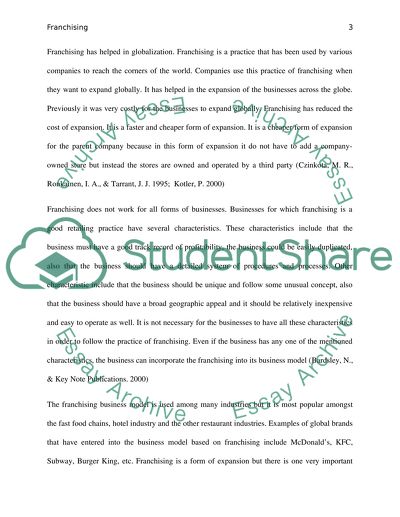Cite this document
(“Marketing Paper: Franchising Research Paper Example | Topics and Well Written Essays - 1750 words”, n.d.)
Retrieved from https://studentshare.org/marketing/1436423-franchising
Retrieved from https://studentshare.org/marketing/1436423-franchising
(Marketing Paper: Franchising Research Paper Example | Topics and Well Written Essays - 1750 Words)
https://studentshare.org/marketing/1436423-franchising.
https://studentshare.org/marketing/1436423-franchising.
“Marketing Paper: Franchising Research Paper Example | Topics and Well Written Essays - 1750 Words”, n.d. https://studentshare.org/marketing/1436423-franchising.


